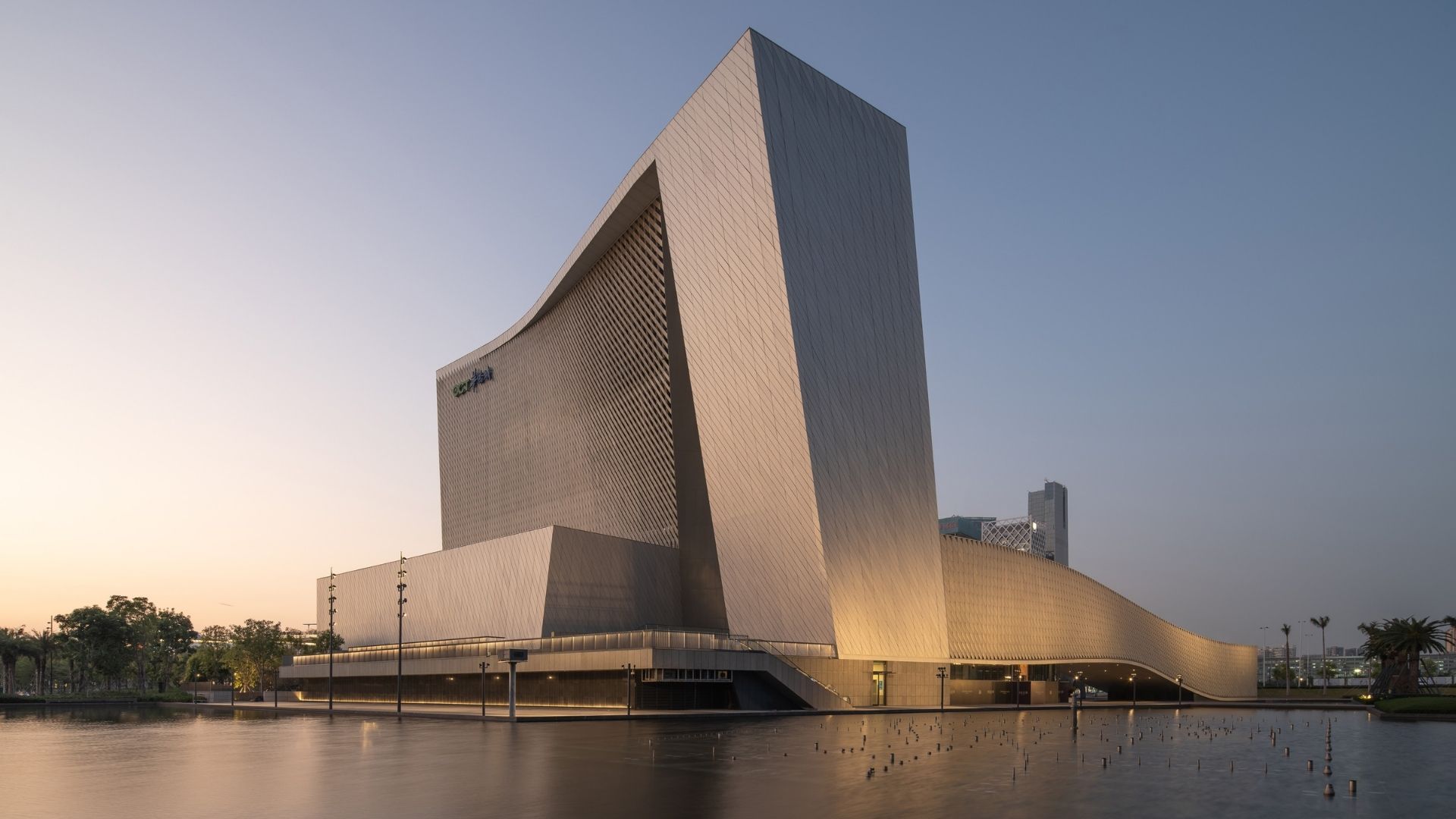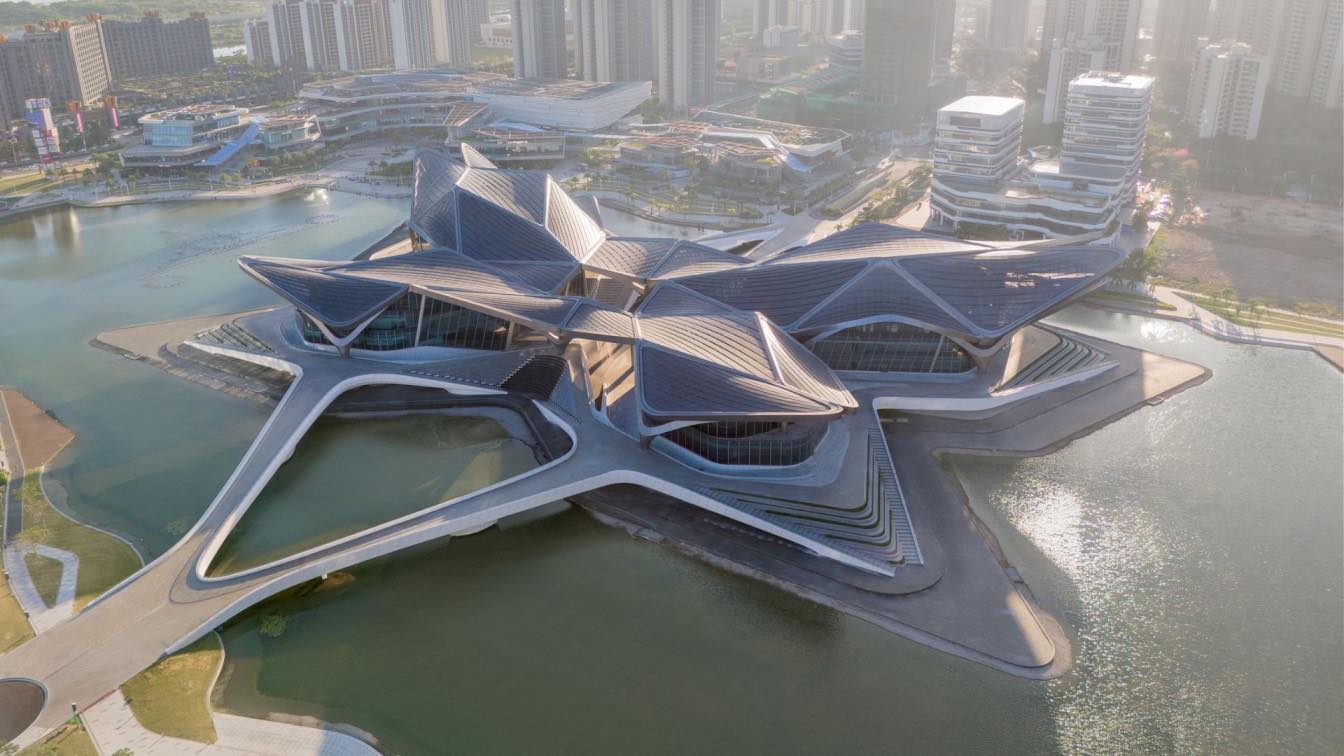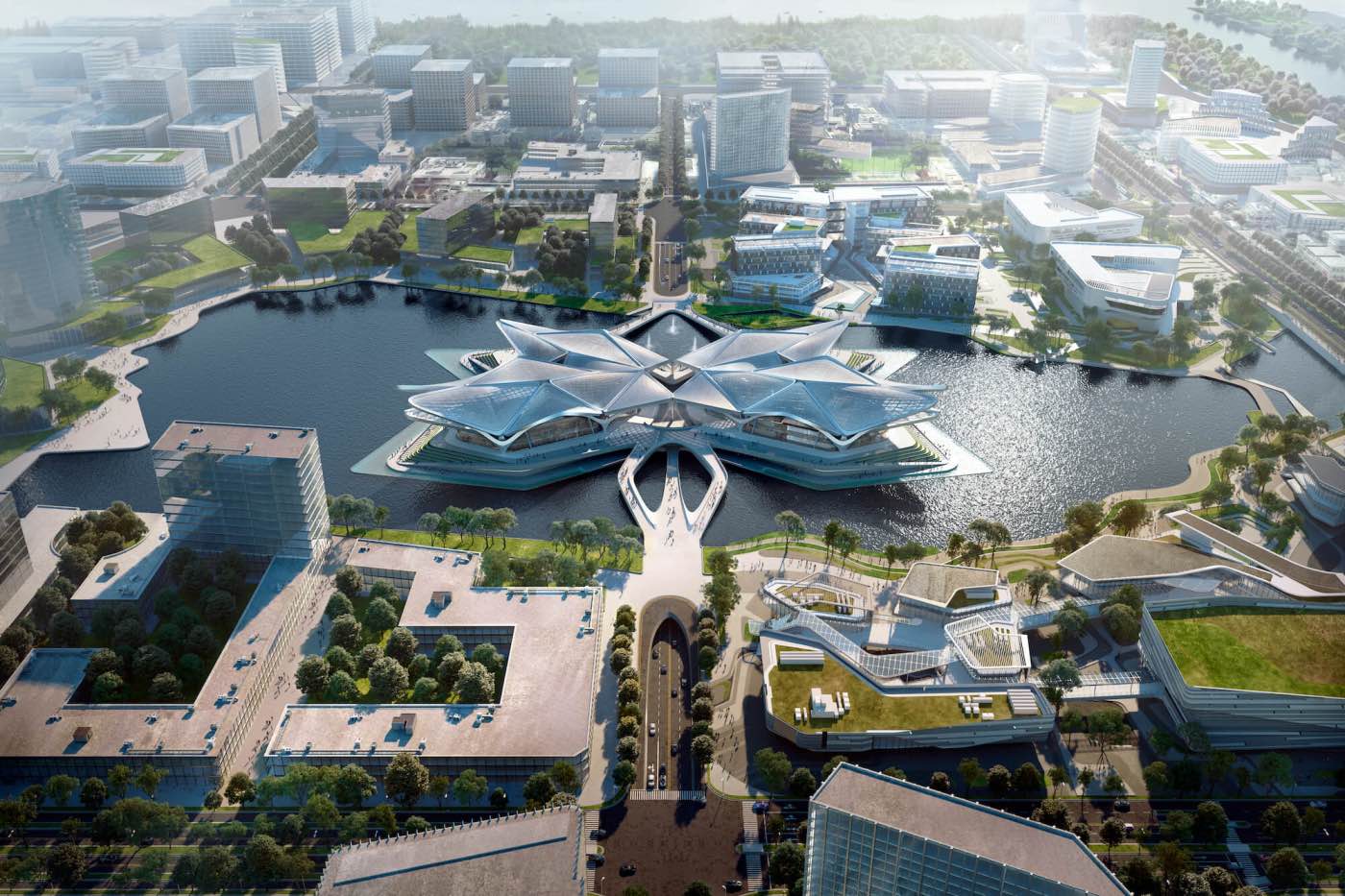Rocco Design Architects Associates have just completed the Performing Arts Centre, part of the Bao’An Cultural District they also realized. Overlooking Quanhai Bay and the South China Sea, the building anchors the southern end of the cultural complex. The 600 seat, 28,000-square-metre building houses Shenzhen’s first performance hall and will host opera, dance, symphonies, and dramatic performances.
Rocco Design Architects Associates’s (RDA) Performing Arts Centre, flagship of the Bao’an Cultural Complex, opened on 17 September 2021 in Shenzhen, China. Overlooking Quanhai Bay and the South China Sea, the building anchors the southern end of the cultural complex. It houses Shenzhen’s first performance hall to be scaled and equipped for international operas, as well as a 600-seat venue and rehearsal facilities. The 28,000-square-metre building will host opera, dance, symphonies, and dramatic performances.

The design takes inspiration from the long and narrow waterfront site. The base of the building is a low-slung, wave-like volume that carries a sense of rhythm and movement along the campus's axis. A delicately perforated facade hearkens back to ancient Chinese craft like wood and ivory carving and produces dramatic visual effects recalling light shimmering on the bay. The scrim-like envelope modulates transparency according to the spaces it encloses, creating openings at the public lobbies and gathering areas and becoming more opaque at the theatres and rehearsal spaces. While formally and technically innovative, the facade concept is rooted in traditional Chinese building screens and shadow walls.

A fly tower tilted 15-degrees off the vertical creates a point-of-orientation that announces the centre as the focal point on campus. Sky-bridges connect the tower to the main volume, offering commanding views over the bay. Gathering areas and elevated porticos line the base of the building, and a restaurant sits at the end of a sloping volume that extends into the plaza, weaving the building into the larger campus.
Visitors enter through a soaring triple-height lobby. A grand curving staircase and billowing walls finished with wooden slats continue the undulating character of the exteriors. Natural light from above filters in through the perforated facade, creating a lively play of shadow across the space.

The main performance hall will host high-profile productions of opera, classical music, and ballet. Its delicately sculpted walls accentuate the organic geometries of the space and optimize acoustic conditions by muffling background noise and enhancing sonic clarity. The stage comprises six double-layered lifts that can be raised and lowered within a range of ten meters, opening new production possibilities. The orchestra pool can be raised to the height of the main stage to extend the performance area into the house.
A 600-seat theatre complements the main performance hall. This space is designed for flexibility to accommodate experimental productions. The stage and seating can be easily rearranged, enabling catwalk, four-sided stage, immersive, and interactive theatre experiences.

About the Bao’an Cultural District
The Performing Arts Centre is part of the Bao’an Cultural District, a 110,000-square-meter arts and performance complex in Bao’An, a newly developed coastal area of Shenzhen. The project was masterplanned and designed by Rocco Design Architects and includes three major new destinations: the Performing Arts Centre, a Library, and a Youth Palace. The Library was completed in 2013 and the Youth Palace in 2018.
About Rocco Design Architects Associates
Rocco Design Architects Associates is a Chinese architectural practice based in Hong Kong. Working in a region with disparate cultural and physical landscapes, and where values from diverging times and places converge, Rocco Design’s work is grounded in the belief that architecture is the embodiment of culture – embracing and reinterpreting the past, as well as addressing modernity – and the requirements of contemporary living.
RDA’s works have been consistently awarded both locally and overseas, including a First Prize Award for the L’Opéra de la Bastille international competition in 1983, ARCASIA Gold Medals in 1994 and 2003, the Chicago Athenaeum Architectural Awards in 2006, 2011, 2013 and 2016, the Kenneth F. Brown Award in 2007, the World Architecture Festival category winner in 2011, German Design Council Awards in 2014, 2015, 2016 and 2017 and two Lu Ban Awards in 2017. The firm has exhibited four times in the Venice Biennale over the last decade, in 2002, 2006, 2010 and 2012, and held its first solo exhibition at the Berlin Aedes Gallery in 2015.










































